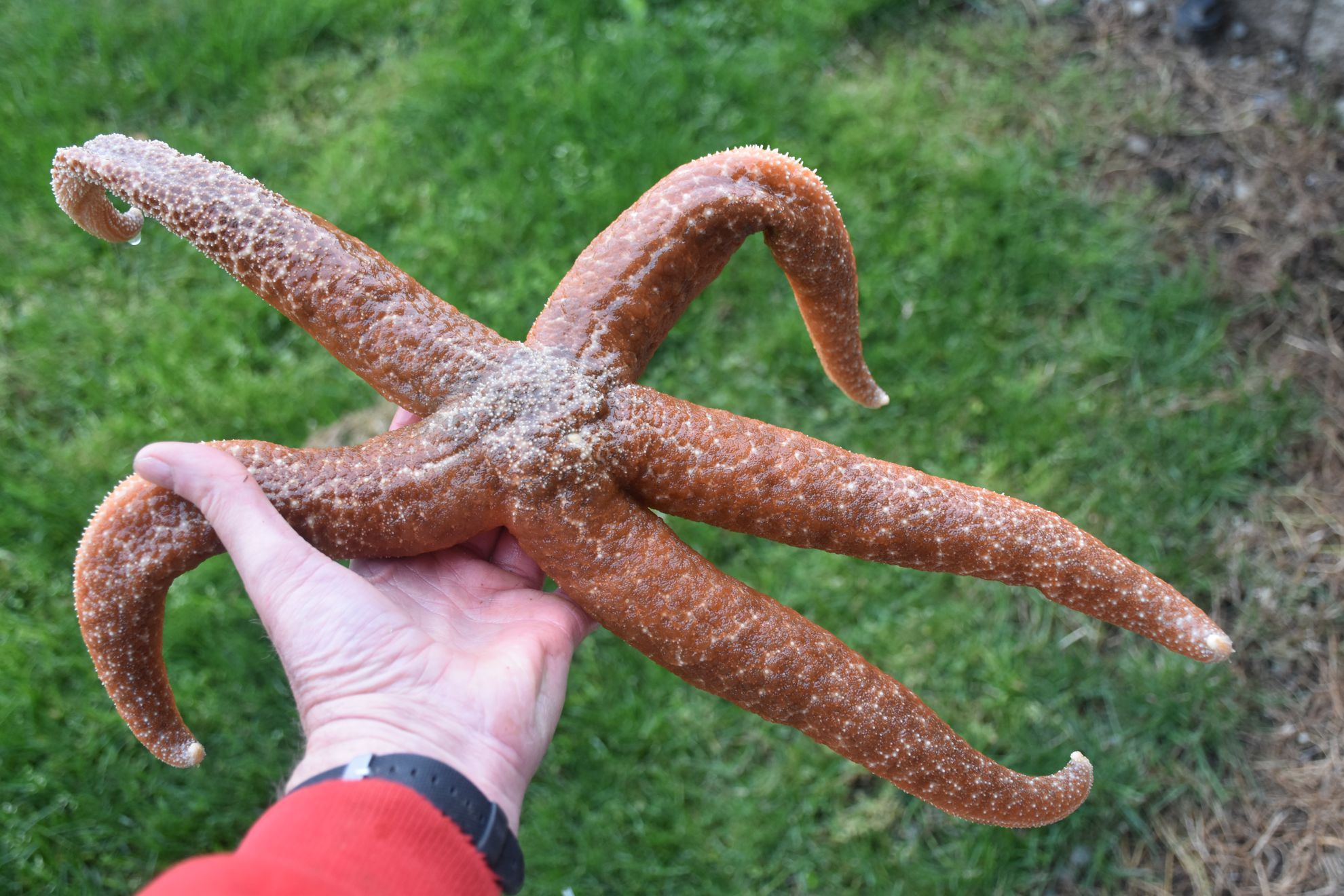Evasterias troschelii (Stimpson, 1862)Common name(s): Mottled star. False ochre sea star; Troschell's true star |
|
| Synonyms: | 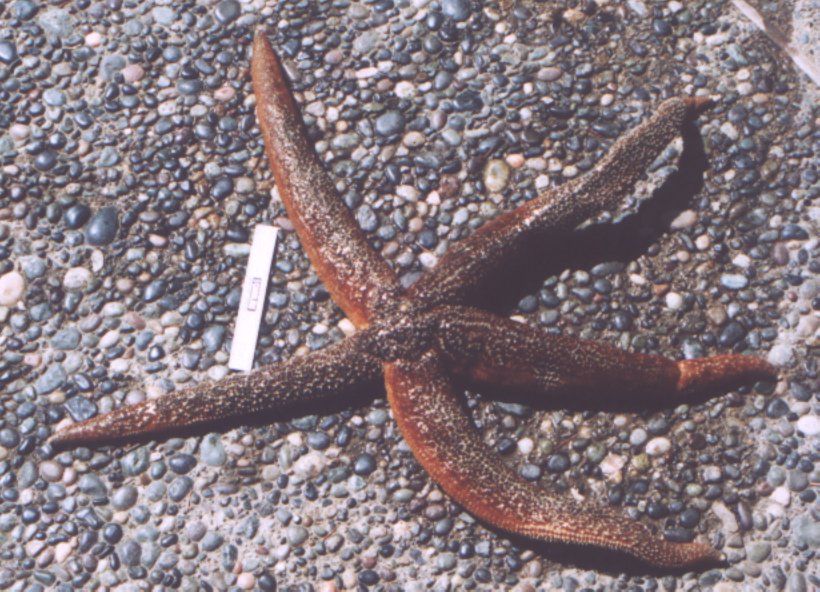 |
| Phylum Echinodermata
Class Asteroidea Order Forcipulatida Suborder Asteriadina Family Asteriidae |
|
| Evasterias troschelii subtidal from Sares Head, WA. Ruler is 6 inches | |
| (Photo by: Dave Cowles, July 2001) | |
How to Distinguish from Similar Species: Small individuals look somewhat like a Pisaster ochraceous or P. brevispinus, but this species has longer rays in proportion to its central disk and the rays narrow before they meet the central disk, and the aboral ossicles are not arranged in a clustering network.
Geographical Range: Pribilof Islands, Alaska to Monterey Bay, CA; Kamchatka. Uncommon south of Puget Sound. This is the most abundant large, intertidal star in the Juneau area.
Depth Range: Low intertidal and subtidal to 70 m. Mostly subtidal in the Rosario area (abundant in eelgrass).
Habitat: On rocks and cobbles (occasionally sand); sometimes on docks and pilings. More abundant intertidally in protected areas than along the open coast.
Biology/Natural History: Feeds on a variety of animals--bivalves, limpets, snails, brachiopods, barnacles, and tunicates. Can evert its stomach (up to a distance equal to half the length of a ray). Several limpets exhibit escape responses from this species. May have a symbiotic scaleworm (Arctonoe fragilis) living in the ambulacral groove or on the body surface (photo). In Alaska one can often find the young of the Alaska King Crab (Paralithodes camtschaticus) nestled between the rays of this seastar. Predators include gulls (especially in Alaska where they are common intertidally), Solaster dawsoni,and Pycnopodia helianthoides; and attacks by the rose star Crossaster papposus and by Alaska King Crab Paralithodes camtschaticus have been observed. Tolerant of reduced salinities down to 20 ppt.
In Burrard Inlet, BC, Canada, this species became more abundant in the intertidal after seastar wasting disease while Pisaster ochraceus became less abundant. This species can be infected but seems less susceptible to infection by seastar wasting disease than is P. ochraceus (Kay et al., 2019).
Return to Main Page
References:
Dichotomous Keys:Flora and Fairbanks, 1966
Kozloff 1987, 1996
Smith and Carlton, 1975
General References:
Gotshall
and Laurent, 1979
Kozloff,
1993
Morris
et al., 1980
O'Clair
and O'Clair, 1998
Scientific
Articles:
Kay, S.W.C., A.M. Gehman, and C.D.G. Harley, 2019. Reciprocal abundance shifts of the intertidal sea stars, Evasterias troschelii and Pisaster ochraceus,
following sea star wasting disease. Proceedings of the Royal Society of
London Part B: Biological Sciences 286:1901 p doi:
10.1098/rspb.2018.2766
Knott, K. Emily, and Gregory A. Wray, 2000. Controversy and consensus
in Asteroid systematics: new insights to Ordinal and Familial
relationships. American Zoologist 40:3 pp. 382-392
Mauzey, K.P., C. Birkeland, and P.K. Dayton, 1968. Feeding
behavior
of asteroids and escape responses of their prey in the Puget Sound
region.
Ecology 49: 603-619
General Notes and Observations: Locations, abundances, unusual behaviors:
This species is commonly found off Sares Head.
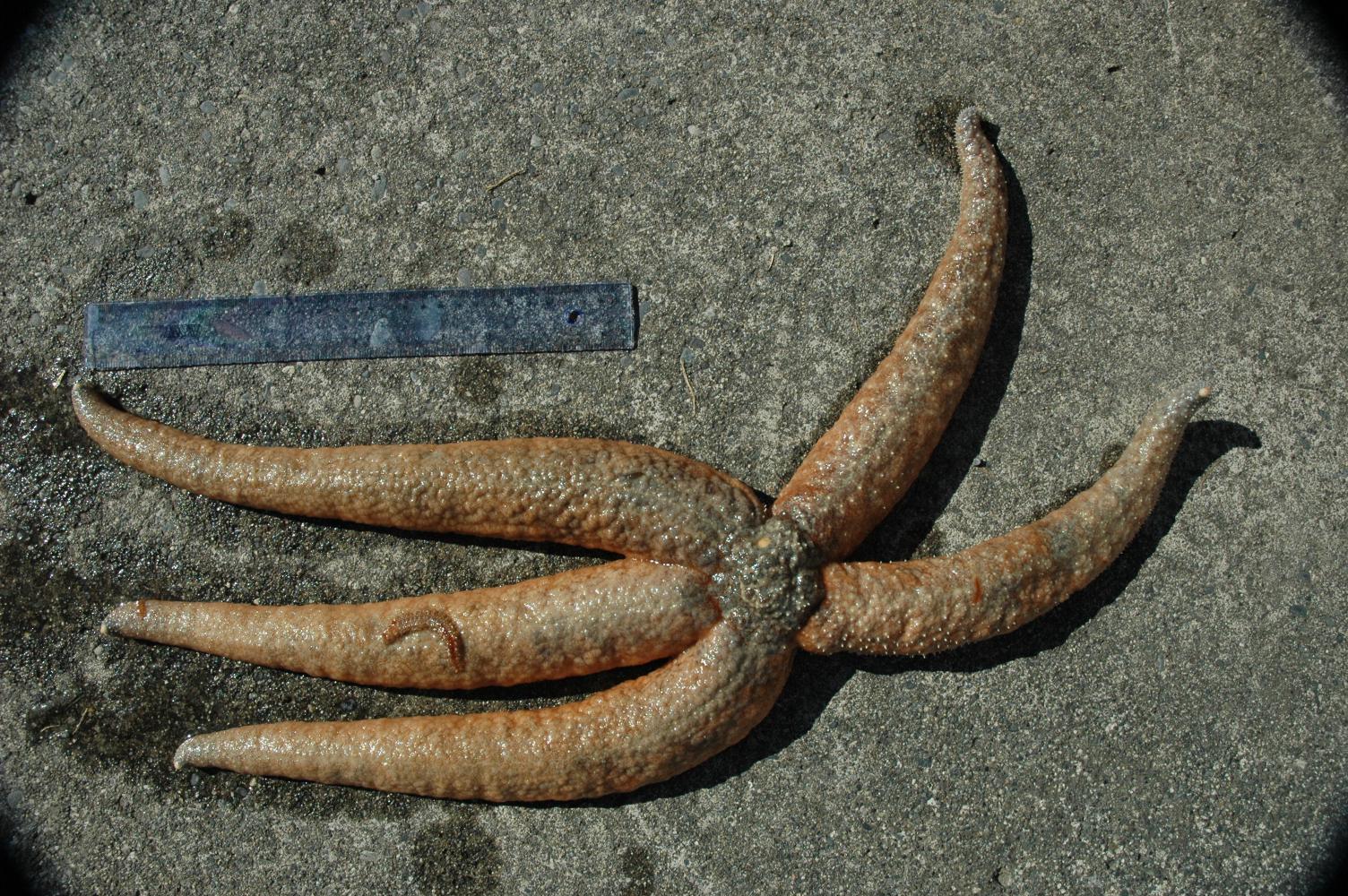
Another individual, with three symbiotic Arctonoe
sp scaleworms
attached. Ruler is 1 foot (30 cm). Photo by Dave
Cowles, July
2005
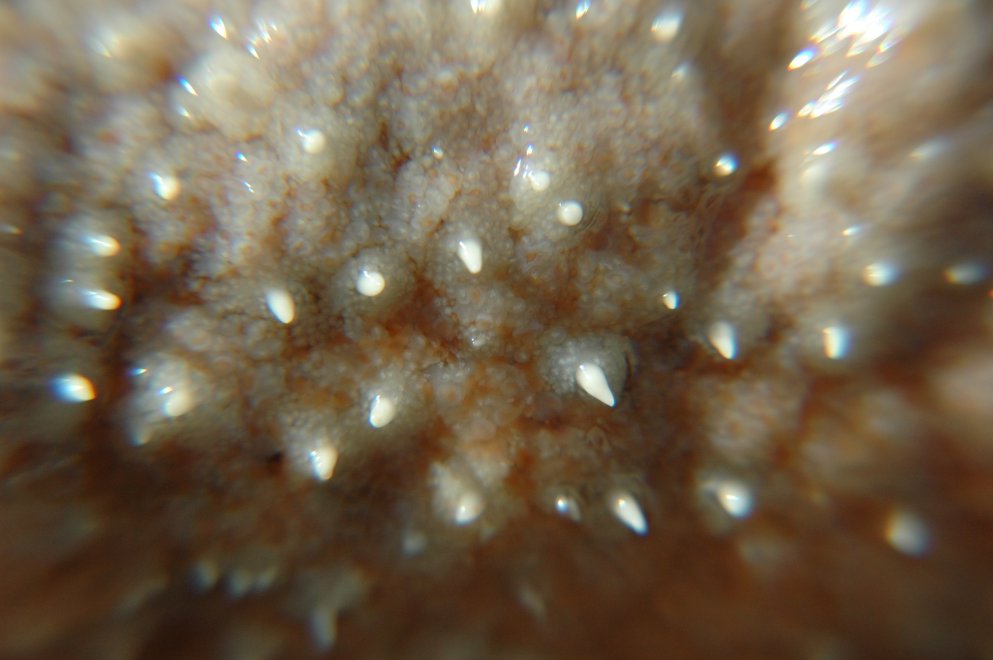
The aboral surface has large spines (1-2 mm long) arranged
singly.
Smaller spines and pedicellariae are arranged in circles around the
large
spines.
Photo by Dave Cowles, July 2005
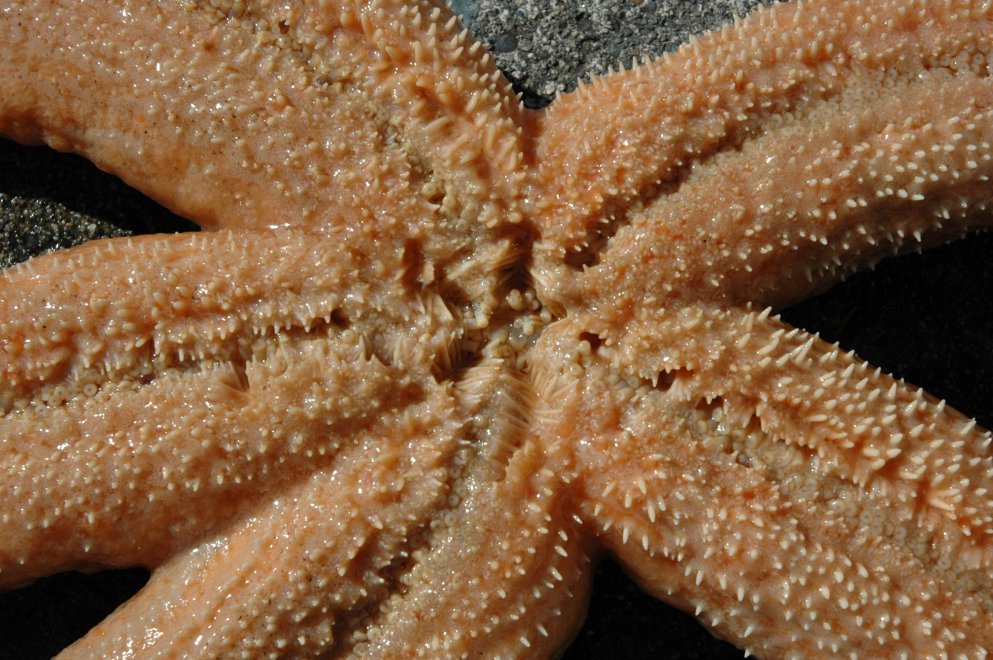
There are no large marginal plates on the rays. The stomach
can
be everted, as it was shortly before this photo. Photo by
Dave Cowles,
July 2005
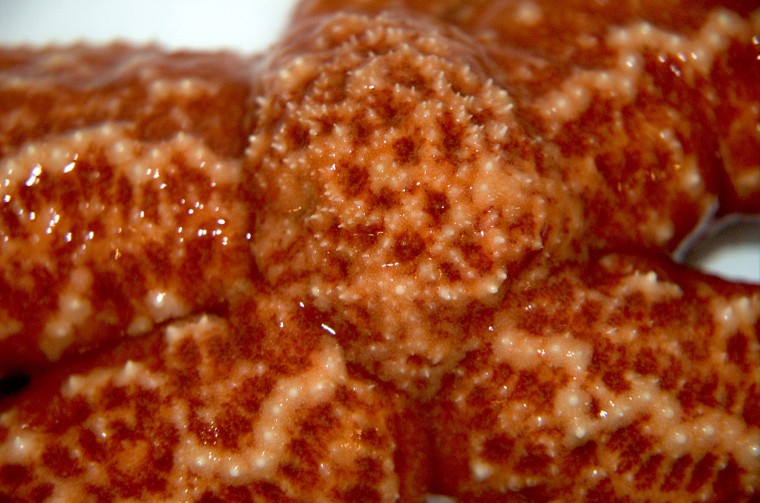
This view of the aboral side of the central disk shows the networklike
system of spiny ossicles. Photo by Dave Cowles, July 2008
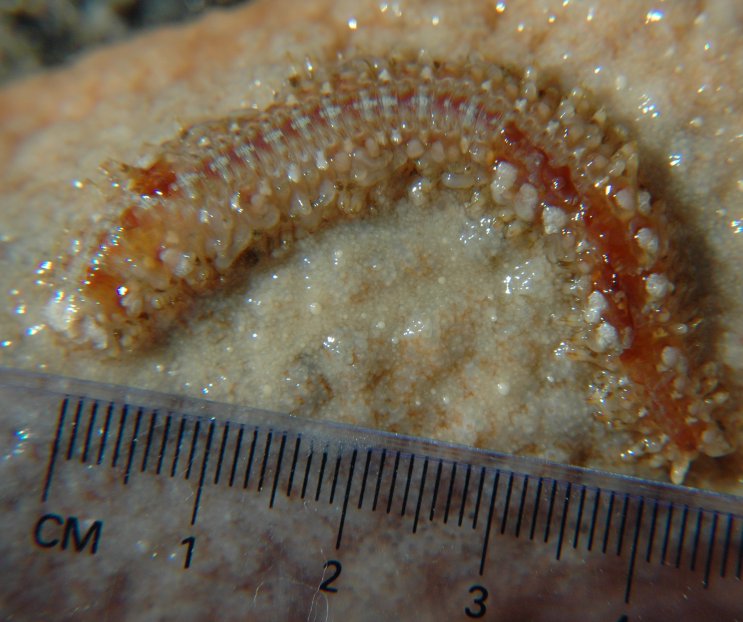
The scaleworm Arctonoe fragilis is a common
symbiont on this
and other seastar species. Photo by Dave Cowles July 2005
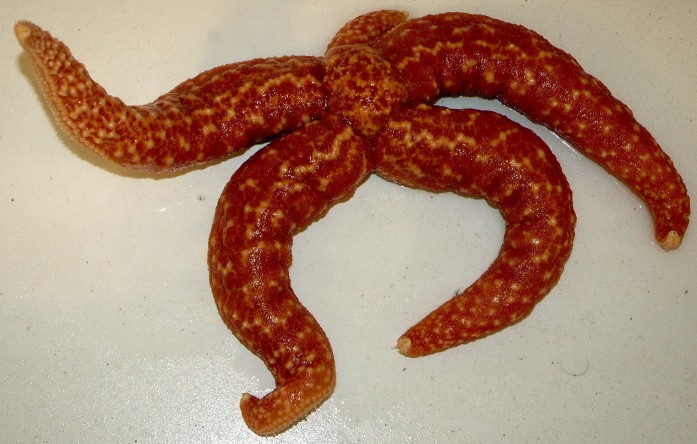
This individual, with individual rays from 25-30 cm long, was collected
by otter trawl from 75 m depth in San Juan Channel.
Notice that it has lost one ray which it is beginning to
regenerate.
Photo by Dave Cowles, July 2008

Here is another individual regenerating. Photo by Dave Cowles, 2019
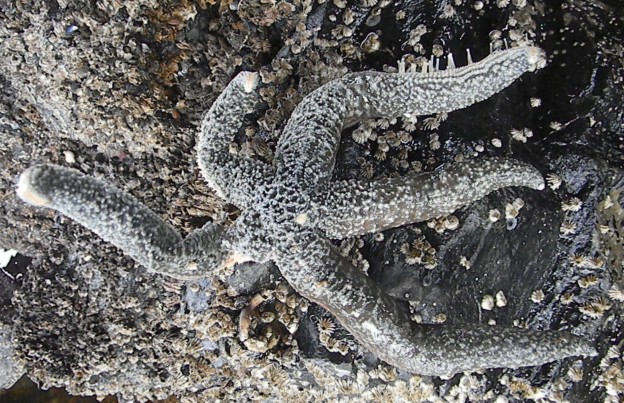
This individual, photographed under the Keystone ferry drawbridge, is purple in color. Photo by Dave Cowles, July 2011
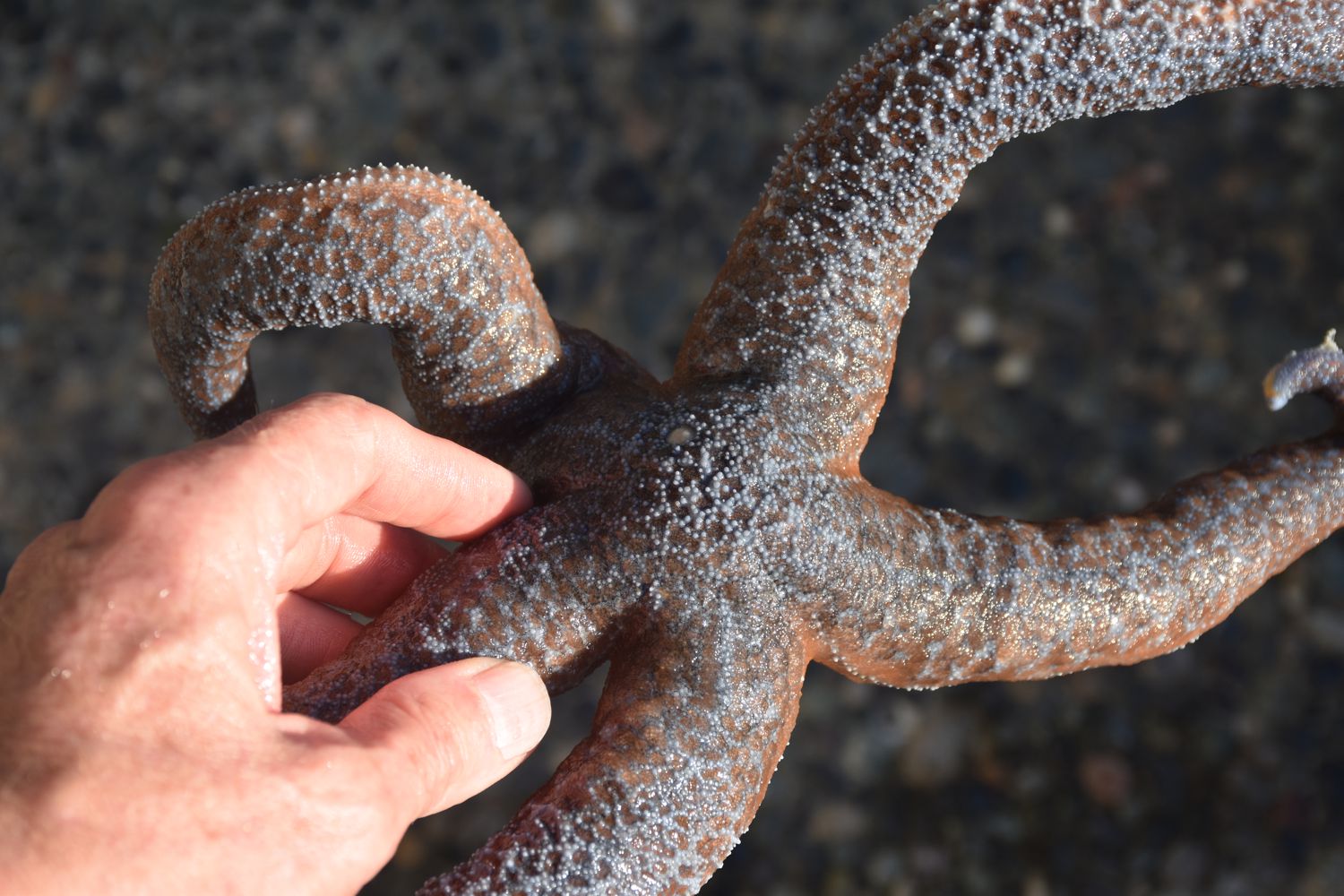
This is a common color for the species. Photo by Dave Cowles, 2019
This is another color variant. Photo by Dave Cowles, August 2020
Authors and Editors of Page:
Dave Cowles (2005): Created original page
